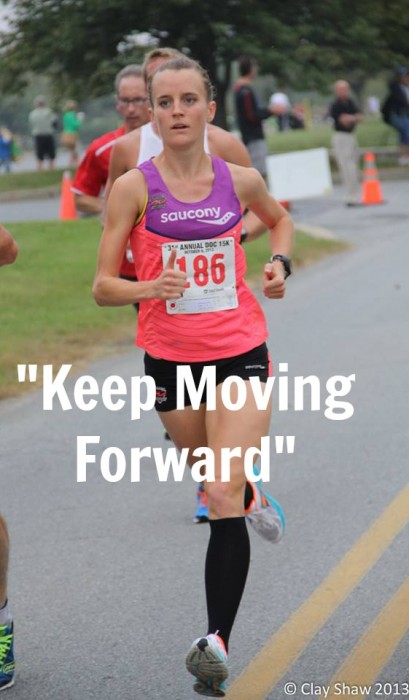I am so very honored to have Ms. Tina Muir guest blogging on RunWiki today. I recently found her blog, and quickly became addicted to her tips and advice. What I find so amazing about Tina is that she’s an elite athlete and yet so approachable and down to earth. I’m such a fanatic of her blog, that I asked her if she would be willing to explain to my readers what a tempo run is, and why it’s so important in marathon and half marathon training. This is only my second guest post. I feel incredibly privileged to have her here today.
If you don’t already know Tina, she blogs at TinaMuir.com. Tina was born and raised in England, she is currently completing her MBA while coaching Track/Cross Country at La Salle University in Philadelphia. Last summer, she finished third in the 10k at the Great Britain Olympic Trials and has PRs of 16:08 (5k) and 33:24 (10k), 2:49:09 marathon. Tina runs for the Saucony Hurricanes team. So now it’s Tina’s turn– read below to discover what a Tempo run is and why – and how – you should be doing them.

Hello RunWiki readers! Nice to meet you (if we have not already met). My name is Tina Muir, and I am a British, Saucony sponsored distance runner. You can learn more about my training, meals I use to fuel up, and random thoughts over at my www.tinamuir.com.
I am honored Lisa asked me to do a guest post to explain one of the most important workouts of half marathon/marathon training. I hope that you enjoy this post, and it helps you get one-step closer to achieving your running goals.
Tempo Run. Those two words have many different associations for different runners depending on your previous experiences; pain, strength, practice, or maybe even I-have-no-idea-what-the-heck-that-is! Whatever comes to mind, one thing you do need to know is that they are crucial to half marathon/marathon training. In fact, they may be the single most important workout. I ran a 14 mile tempo a few months ago, and I honestly think it was one of the toughest workouts of my life, but also the single most beneficial workout I have put my body through in a long time.
A tempo run is used to push your “threshold” (another fancy term thrown around in the running world) of what your body can handle without lactic acid causing a significant decline in speed. You know that feeling where your legs are on fire, your breathing mimics a panic attack, and the world starts to spin? Yeah, trying to avoid that. Running at a pace that is “comfortably hard”, you are training your muscles to work out at a speed where you are just below where the lactic acid causes those symptoms. Over time, you will be able to increase the duration you are able to run tempo pace for, and this will mean you can race faster too (yippee), as your body can handle a faster pace for longer.
I use tempo runs for the first few workouts of every new training season, and at least once per month after that. You could even do these once every other week if you desire. They are a sneaky way of jumpstarting your body into racing shape; many of my elite and Olympic athlete friends use tempo runs for this reason. Tempos also make race day less scary as you have already completed a sustained hard effort in training. If you are training for a half marathon, your tempo runs should be 6-8 miles long. If you are training for a marathon, they should be between 8-12 miles long.
As I mentioned, your pace should be comfortably hard, around 80% effort. The best way to calculate roughly, what pace this would be is to add on around 30-50 seconds per mile to your 5k race pace. You should be able to say 1-2 words at a time if someone tried to talk to you.
The pace should feel relatively comfortable for the first few miles, but as the workout goes on, it becomes harder to maintain the pace, and you have to work harder each mile to keep the same speed going. By the end of the workout, you will be tired, but more from the volume of holding a relatively hard pace for an extended period, compared to the exhaustion of being on your hands and knees breathing as if you have run away from a knife attack. Much the same as the dull fatigue of the last few miles of a marathon compared with the intense fatigue in the muscles that come in a 5k.
Make sure you do at least a mile warm up and cool down, and I would definitely recommend some strides and drills before starting. Check out my Secrets to Success Posts on my blog for more information about these!
Once you have run a few tempos, your body will acclimatize to them, and your pace will come a little more natural. They may be uncomfortable, but I promise they will help a lot, and you will be able to reflect back on them when you are hitting the tough parts in a race to help you keep pushing through that pain so you cross the finish line in your best time yet!

If you would like any more information, feel free to email me at tinamuir88@gmail.com
Thanks for reading!
Connect with Tina–>
